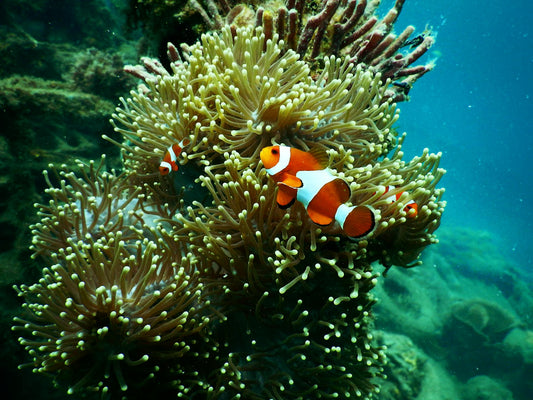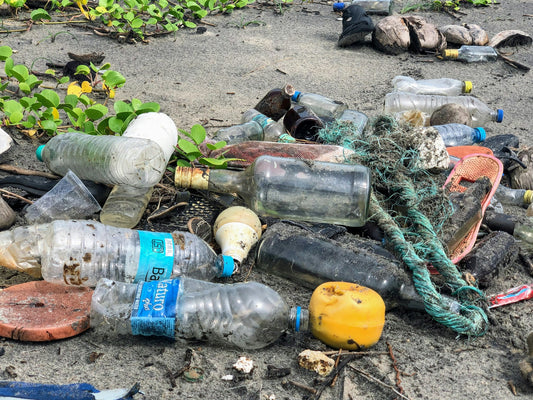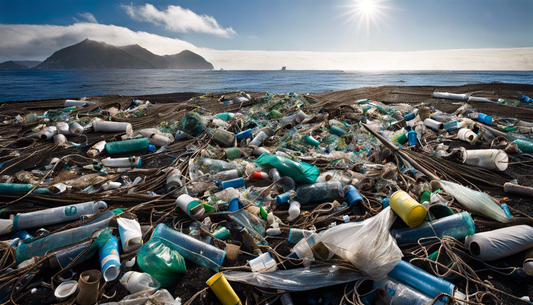Share
People worldwide are aware of the problem of plastic pollution, whether they live close to the sea or far away from it.
However, have you ever thought about which countries are contributing the most to this environmental calamity?
Which countries are recklessly disposing of a large amount of plastics into the oceans, thus exacerbating this problem?
Today, we begin our quest to find out the truth. We will investigate the data and look at the causes of plastic pollution in various regions of the world.
How Plastic Pollution Data is Estimated?
It is also essential to understand how data on the scale of plastic pollution in the oceans was collected.
Here's a breakdown of the methodologies commonly employed:
Field Research and Surveys:
Scientists conduct field research and surveys both on land and sea to determine the quantity of plastic waste dumped into the ocean.
This involves actually removing debris from the beaches, shores, and water surface following specific guidelines. The data collected gives an understanding of the kind, quantity, and origin of plastic pollution.
Remote Sensing Technologies:
Satellites and aerial drones are valuable tools for the identification and tracking of the distribution of ocean plastic pollution over broad areas.
These tools are pretty helpful in capturing images and information about the extent of plastic pollution in hard-to-reach places.
Oceanographic Modeling:
Oceanographic models are employed to predict the movement and deposition of plastic waste in the ocean.
By using information on the ocean currents, wind, and other climatic factors, the movement and dispersion of plastics can be estimated.
Which Countries Are Dumping The Most Plastic Into Oceans

1. India
India has a large population and an expanding economy, which is why plastic waste management is a big issue in India.
Approximately 278 million pounds (126.5 million kilograms) of plastic waste is dumped every year, and the country is among the world’s leaders in ocean plastic waste disposal.
What Are The Challenges fo Pollution in India?
Several factors have been identified as the cause of India’s high levels of plastic waste production and management.
Increased urbanization, population expansion, and shifts in consumer behaviors have amplified the use of single-use plastics in packaging, food delivery, and products.
However, the waste management sector in India has not been able to cope with the increased demand for plastic products.
Due to the lack of sufficient waste management, sorting, and recycling in many regions of the country, much of the plastic waste ends up in landfills, open dumps, and water bodies.
Sacred rivers such as the Ganges and Yamuna are also polluted with high levels of plastics and other wastes that contribute to the pollution of the ocean.
2. China
China is one of the largest and most populous countries globally, and it has a large market and production capacity for plastics and waste products.
With an estimated 155 million pounds (70.7 million kilograms) of plastic waste disposed of every year, China is one of the countries that contribute significantly to ocean plastic dumping.
What Are The Challenges for Pollution in China?
China is a country that has experienced rapid development in its industrial and urban sectors.
It has led to a significant increase in the production and use of plastic products across various industries, including packaging, construction, and consumer products.
Again, the country’s waste management system has not been able to cope with the enhanced plastic waste production due to population growth.
A significant issue that China has is the inefficient management of plastic waste, including the collection, sorting, and recycling process, which results in plastic waste being dumped into rivers, coasts, and oceans.
3. Indonesia
Indonesia, with more than 17,000 islands, is famous for its stunning landscapes, but unfortunately, it is also among the world’s leaders in marine plastic pollution.
This is due to the fact that Indonesia is a large archipelagic country with a long coastline and densely populated cities. It is estimated that the country dumps 123 million pounds (56.3 million kilograms) of plastic into oceans annually.
What Are The Challenges for Pollution in Indonesia?
The use of single-use plastics is one of the most significant factors that contribute to plastic pollution in Indonesia.
From the use of plastic bags and, bottles, food packaging, and straws, these disposables are now part of a daily routine, especially in urban societies.
However, the ease of use of these products has a downside in that they are awful for the environment.
The lack of proper waste management infrastructure is a significant factor that worsens the situation.
The majority of the regions in Indonesia do not have an appropriate waste management infrastructure, which results in the dumping of waste and littering. Thus, tons of plastic waste get into rivers, streams, and finally, oceans.
4. Brazil
Plastic pollution is also a significant problem in Brazil. Brazil being a large economy and a country with a large population, it uses a large amount of plastic products.
According to estimates, Brazil contributes 84 million pounds (38 million kilograms) of plastic into oceans annually.
Plastic is used for packaging materials, bottles, bags, and many other items that people consume on a daily basis.
What Are The Challenges for Pollution in Brazil?
This high level of consumption, coupled with poor waste management infrastructure, is one of the reasons why the country has a plastic pollution issue.
In cities such as Rio de Janeiro and Sao Paulo, the streets are filled with people, and the beaches are filled with the effects of plastic waste.
Discarding waste and garbage is rampant, and plastic waste ends up in water courses and coastal regions.
The problem of plastic waste affects the ocean, from the Amazon River in South America to the beaches of Copacabana in Brazil.
Preventing Ocean Pollution is a Collective Effort

The dumping of plastic in oceans is a serious problem as it has devastating effects on marine ecosystems.
If one country keeps dumping plastic into oceans, then the positive contributions of other countries will not benefit them at all.
To effectively address this problem, all countries should adopt stringent measures.
What else can we do to protect our beautiful oceans? Feel free to leave a comment below.
We hope you enjoyed this article. If you want to read more like this, make sure to check out our Blog and follow us on Instagram. If you are interested in truly sustainable products, check out our Shop.








